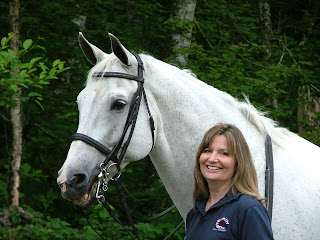- Note: This article on my trip to a matryoshka factor outside Moscow appears in this month's issue of Mystery Reader's Journal. You can check out this excellent publication at http://www.mysteryreaders.org/
Walking into the Souvenir Factory in Sergiev Posad, (45 miles from Moscow) my 16-year-old son, Ian, and I were greeted by the earthy smell of wood chips laced with the pungent odor of lacquer. Souvenir was a landmark stop on our whirlwind trip to Moscow and the Golden Ring to research settings for my new mystery novel, THE LAST MATRYOSHKA. Guided by the factory director, Elena, we stopped first at the lathe operator’s workshop, where we watched a master craftsman create the bottom half of a doll by hollowing out a round piece of linden wood spinning on his lathe. He fashioned the top half in the same way and then started on the next, smaller version of the doll. All this accomplished with no patterns or templates in sight.
In the painting room, a half-dozen highly skilled women employed the tiniest of brushes to paint intricate designs and faces on the matryoshki. Ian was given a blank doll and he surprised everyone by painting a Brazilian soccer player, all greens and yellows to match their flag. His creation now sits atop his computer at home.
Originally known as the Zagorsk Artistic-Production Workshop, the factory was built in 1944, during what Russians still call the Great Patriotic War. The Soviets considered Matryoshka dolls to be powerful representatives of Russian culture and soldiers were even called back from the front to manufacture them. Under Soviet rule, the artists were forced to paint one image only on the required yellow background—the noble peasant woman, wearing a bright red scarf. But of course it hadn’t always been this way. During the early 20th century, an astounding variety of nested dolls were created and decorated with everything from fairy tale scenes to the faces of famous generals and the life of Christ. Many nested dolls contained as many as 30 pieces! Today these early masterpieces are avidly sought by collectors.
The core idea for THE LAST MATRYOSHKA came to me while visiting my mother in Brooklyn. As I listened to her neighbors chattering in Russian, admired the Russian fashionistas shopping in high heels on Kings Highway and gazed at the newly minted Matryoshka dolls in the shop windows, the mystery writer in me got to wondering: what if a Russian émigré had a lurid past in Russia that followed him to Brooklyn and created havoc in his new life? I imagined him receiving a series of packages, each containing a nesting doll with a threatening message inside. The smallest doll would be opened in Russia and reveal a devastating fact that would turn the tale on its head.
The storyline of my book soon began to resemble the way a nesting doll is constructed, with the antagonist hiding his true identity inside layers of deceit and challenging poet and private investigator Jo Epstein to unmask him. By the time I reached the part of the novel that was to be set in Russia, I realized that I could read a stack of books and click through endless pages on the Internet and still fail to find the telling details I needed to lend credibility to my Russian characters. So I booked a flight to Moscow and learned some basic Russian phrases—please, thank you, where is the Metro?—from a CD that I played in my car while driving around Seattle.
In addition to touring the Matryoshka factory, Ian and I visited Vladimir Central Prison and were told that we were the first American tourists to do so. It was chilling to see all the books on exhibit in the prison museum that had been written by authors imprisoned there.
Ian was my “official photographer,” and we were always on the lookout for unusual settings to document. Since I love “writing to picture,” almost every setting we photographed appears somewhere in THE LAST MATRYOSHKA: the Monastery of St. Euthymius at Suzdal, the iconic telegraph office on Tverskaya Ulitsa, the apartment where was stayed (which during Soviet times housed three families), and of course the famous Petrovka 38, headquarters of the Moscow Criminal Police.
Everywhere we went, Ian and I saw Matryoshka dolls. The widely accepted story is that a Russian merchant transported the first nesting doll from Japan to Russia in 1899. Russian lathe operators had been making nested Easter eggs for years, so it was no surprise that they were quick to adapt the dolls—whose many “babies” made them potent symbols of fertility—to their own culture.
But much like the country in which they are made, these dolls have broken free from their past while remaining distinctly Russian. It was inspiring to see how post-Soviet artists have ushered in a Matryoshka Renaissance. There are Bill Clinton dolls inside of which Hillary and Monika reside; dolls painted with scenes from Maurice Sendak’s Where the Wild Things Are; reproductions of masterpieces from the Tretyakov Gallery in Moscow; even dolls portraying the family members of the last Russian Tsar.
One of my favorite matryoshkas is the Famous Russian Poets and Authors doll. Who knows, maybe Famous Mystery Writers will be next…






